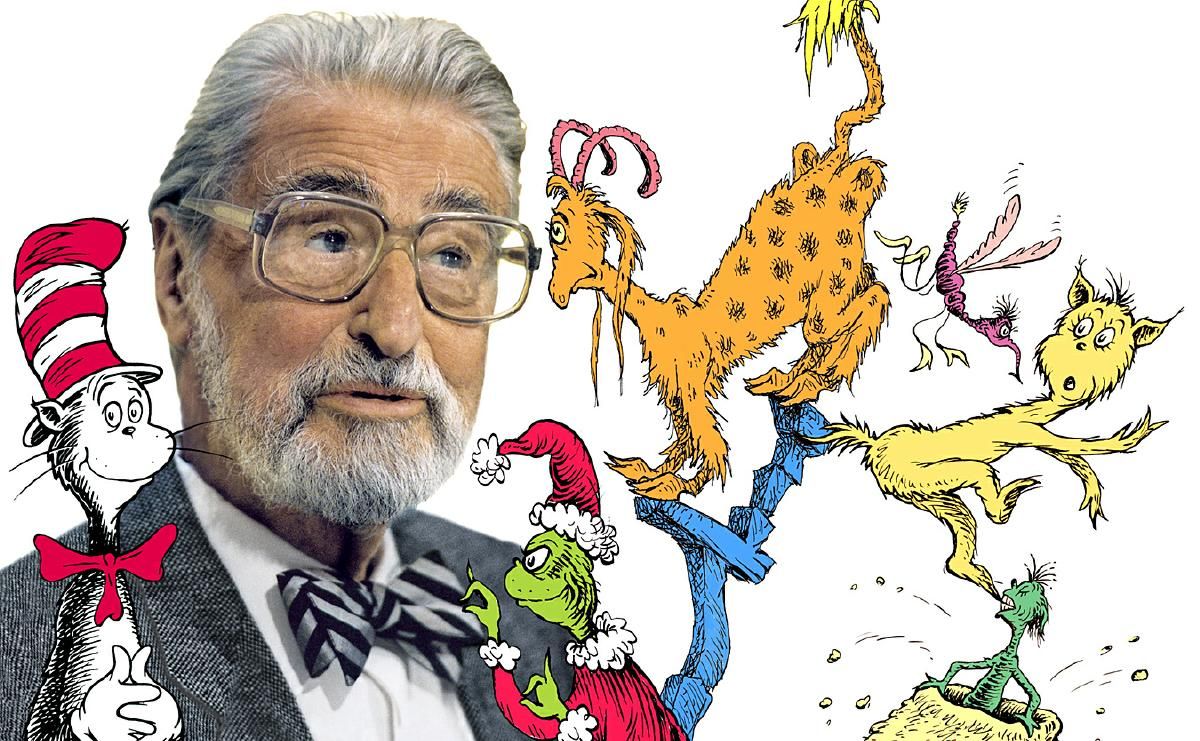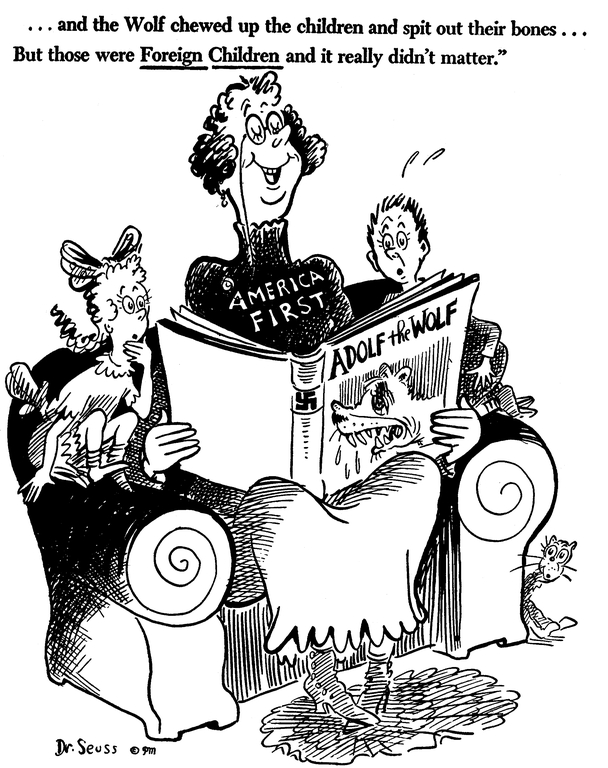In mid-2015, global debate raged over an increasingly large exodus from Syria, while the terror attacks in Paris on 13 November 2015 exacerbated tensions about matter of asylum seekers across the world.
Articles that were popular on social media in the wake of those attacks in Paris included some pertaining to similar events in U.S. and world history. One prominent rumor accurately held that Anne Frank was one of many Jewish children denied entry to the United States in the early stages of World War II, and as a result she (like others) died in the Holocaust. Another surprisingly relevant claim involved the sentiment of Americans toward to European refugees in 1938, with the vast majority of the former (80 percent) unmoved by their plight and disapproving of their migration to the U.S. to escape Hitler's growing reach.
Another popular rumor was that iconic children's author and illustrator Dr. Seuss (Theodor Seuss Geisel) had espoused surprisingly strong positions on the isolationist political climate in the United States as World War II began. Among Seuss' putative works was the above-reproduced cartoon, eerily applicable to the Syrian refugee crisis of 2015. In that cartoon, a self-satisfied mother wearing a sweater bearing the legend "America First" reads a book called "Adolf the Wolf" to two horrified, saucer-eyed children, telling the youngsters the story of how "the wolf chewed up the children and spit out their bones ... But those were Foreign Children, and it didn't really matter":
Seuss' catalog of political cartoons is a well-documented (if infrequently referenced) aspect of his long career. The 1999 book Dr. Seuss Goes to War: The World War II Editorial Cartoons of Theodor Seuss Geisel focuses on this period of Seuss' work, of which a 2013 Atlantic article reported:
Seuss' outrage may have had something to do with his background. German was spoken in his childhood home, and between the two wars he traveled and studied in Europe. His intimate knowledge of the continent, combined with his left-leaning politics, made Nazism especially horrifying to him. "I think he was also teased for his German heritage as a child," [Judith] Morgan, ]coauthor of the book Dr. Seuss and Mr. Geisel] said. "So he may have wanted to prove how strongly he felt about America."
In Geisel's political cartoons, Hitler showed up as a villain in many forms: a mad scientist amputating limbs, a bureaucrat giving orders to the devil, a trophy hunter trying to add a Russian bear to his taxidermy collection. In contrast, Mussolini was depicted as a bumbling idiot. In one of Geisel's cartoons, the Italian dictator furiously pedals a motorbike with tank treads. "Yoo hoo, Adolf!" he calls out in the direction of Russia. "Lookee! I'm attacking 'em, too!" But his bike is tied to a post.
Later in life, Geisel admitted that many of his political cartoons were "hurriedly and embarrassingly drawn" and "full of many snap judgments." That was never more true than when he focused on the Japanese. Instead of mocking their leader, as he did with Germany and Italy, Geisel ridiculed the Japanese people, drawing them as grinning menaces, stray cats, and slithering worms.
He even took on Japanese Americans — a puzzling move for a grandchild of four German immigrants. One of Geisel's cartoons shows a cheerful line of slant-eyed people marching down the West Coast, picking up blocks of TNT and looking out over the Pacific for a "signal from home." It appeared in print on February 13, 1942, just six days before Franklin D. Roosevelt signed the order that sent more than 110,000 Japanese Americans to internment camps.
The Library at the University of California, San Diego hosts a complete collection of Seuss' wartime political pieces under the following description:
Dr. Seuss (Theodor Seuss Geisel, 1904-1991) was a life-long cartoonist: in high school in Springfield, Massachusetts; in college at Dartmouth (Class of 1925); as an adman in New York City before World War II; in his many children's books, beginning with To Think That I Saw it on Mulberry Street (1937). Because of the fame of his children's books (and because we often misunderstand these books) and because his political cartoons have remained largely unknown, we do not think of Dr. Seuss as a political cartoonist. But for two years, 1941-1943, he was the chief editorial cartoonist for the New York newspaper PM (1940-1948), and for that journal he drew over 400 editorial cartoons.
As that collection's introduction noted, Seuss primarily created his political works for a New York newspaper between 1941 and 1943 (and not for child readers). The cartoon reproduced above was included in that collection with the following captioning:
Title: ... and the wolf chewed up the children and spit out their bones... but those were foreign children and it really didn't matter.
Creator: Seuss, Dr.
Publisher: PM Magazine
Date: October 1, 1941
Notes:Converted to black and white, cleaned up so that only the line art was present (1999)


